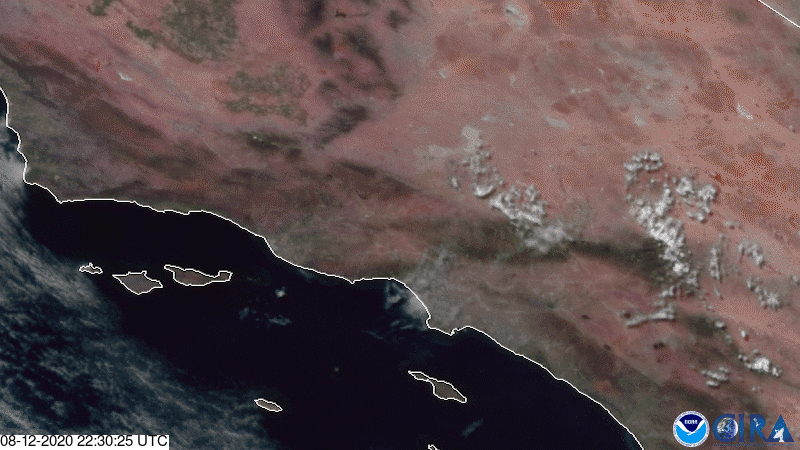
During the early morning hours of August 13, 2020, NOAA’s GOES-West satellite viewed the rapid growth of the Lake Hughes Fire in Angeles National Forest. The flames have, as of 9 a.m. PDT on August 14, engulfed over 17 square miles and are at 12% containment. The combination of GeoColor, the Fire Temperature product, and Band 2 (which has the finest resolution of all of GOES-R satellites’ ABI bands) captures the flames' rapid progress, which have been helped by the excessive heat that is currently affecting the Los Angeles area.
Current weather conditions are not favorable for containment. Authorities state that “[h]ot temperatures in the mid-90s [degrees Fahrenheit] and widespread humidities in the single digits and teens will affect a large portion of interior southwestern California... The gusty winds, low humidities, and hot temperatures will bring elevated to...critical fire weather conditions.”
The newly developed Lake Fire is putting a strain on already stretched resources in the area; the Apple Fire , which broke out last week in San Bernardino National Forest 100 miles away, had just reached 55% containment earlier this week.
Angeles National Forest officials currently have issued evacuation orders for area residents and have closed roads leading to and away from the fires to the general public. As of August 13, 500 firefighters from Angeles National Forest, LA County, and adjacent agencies are working to contain the blaze.
This is not the first time that the Lake Hughes area has been under severe threat: in 2015, authorities battled a fire that eventually spread over 49 square miles and left a burn scar that was easily visible from outer space.
This GeoColor enhanced imagery was created by NOAA's partners at the Cooperative Institute for Research in the Atmosphere. The GOES-West satellite, also known as GOES-17, provides geostationary satellite coverage of the Western Hemisphere, including the United States, the Pacific Ocean, Alaska, and Hawaii. First launched in March 2018, the satellite became fully operational in February 2019.
